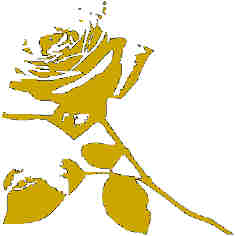
The German Thai Link |
Bangkok Transportation |

 |
|
 |
You'll need two things to navigate this city successfully: a map and patience. Bangkok's streets are among the busiest and most crowded in the world, and traffic headaches are as much a part of Thai lives as monsoons and fiery hot chili peppers. Midday traffic is bad enough, but rush hours (6 to 10 am and 3 to 7 PM) are four-hour bottlenecks. Renting a car without a driver is not recommended.
Don Muang International Airport is 24 km north of the city center. In the early morning and at night, the drive into the city takes about 40 minutes. At any other time, plan on at least one hour.
Express Boats This combination of boat and bus is perhaps the most efficient way to travel around.
Taxis There are two taxi stands in the arrival hall. One is the Thai International Airlines Limousine Service, which costs between 500 and 600 baht, depending on your destination. The other stand is for public taxis, which cost around 230 baht (excluding the expressway fare), depending on your destination. Most of the taxis are metered, but there are still some taxi drivers who will bargain. Public taxis just outside the airport are much cheaper, but are not recommended if your are not really trusted with the thai's.
Airport Buses A great new Airport Bus Service has been added, with large air-conditioned buses that serve the entire major tourist and business areas on three different routes. Large signs mark the stops. Buses run from 5 am to 11 PM, leaving every 15 minutes.
Train Going by train is the cheapest but least appealing route into the city. The trains are dirty, and the station is inconveniently located. At the airport, the station is in front of the Airport Hotel (walk across the pedestrian bridge from the international terminal). The train runs to Hua Lampong, Bangkok's central terminal, every hour daily from 5 am to 8 pm. The ride takes 40 minutes.
Rental Cars Avis and Hertz are on site. Vehicles are driven on the left side of the road. Speed limit on the major highways is 80 kph. Because Bangkok is the center of the country politically, economically and geographically, all major roads pass through it. Highway 1 goes north to Chiang Rai, Highway 3 goes southeast to Pattaya and Rayong, and Highway 4 goes south to the Malaysian border. Unfortunately, there's no easy way to bypass the city. The elevated toll road, the Bangklo-Jangwatana Expressway, is an attempt to alleviate traffic problems, but often you can look down and see street traffic moving faster. Toll for the expressway is 30-40 baht, depending on which exit you take. The Don Muang Tollway can cut the trip to and from the airport by at least 20 minutes. It costs 20-40 baht more. Roads in Bangkok seem to be constantly in a state of repair. Sukhumvit Road, the main street of Bangkok, always seems to be torn up in one location or another.
Construction of the new Skytrain system, a modern elevated railway that's expected to alleviate some of Bangkok's traffic woes, is expected to add to roadway difficulties for the next several years.
Traffic is horrible. Thais spend so many hours in their vehicles every day that many are equipped with TV sets. Vans that carry the family are often outfitted with toilets and beds for the children. Our strong recommendation: Leave the driving to someone else.
Bangkok has three major bus terminals, one for each direction of travel outside the city. It's nearly impossible for a non-Thai-speaking person to make reservations by phone. Use one of the many local travel agents in town. The Bangkok Microbus Co. has air-conditioned, comfortable buses. TV, newspapers, magazines, drinks and snacks are available.
Water taxis They ply the Chao Phraya River and the city's canals (klongs); they're cheap and relatively efficient, because there's less congestion on the waterway. This is the preferred mode of transport if the pickup and drop-off points are convenient. Be aware that the klong taxis don't come to a full stop and dock -- they just slow down long enough for you to jump on.
Tuk-tuks These are three-wheeled contraptions that are half motorcycle and half golf cart. They offer exciting and unsafe-at-any-speed transportation. They're more expensive than taxis, and since there's no meter, you must bargain with the driver on price. Tuk-tuk drivers are sharp bargainers, and you could go broke using them exclusively.
Motorcycles They're a viable, though dangerous way of getting around. In a city where traffic often sits for half an hour before creeping up a few inches, motorcycle drivers can get you to your destination in good time. Drivers defy traffic laws; good sense and even the laws of gravity. The price of a death-defying motorcycle ride is a bit more than a metered taxi, but you can bargain. Keep your body tucked in -- every inch counts. Wear a helmet. Check the neck of your motorcycle driver for a blue line and triangle peeking out above his collar. If you spot these tattoos, choose another driver. (Many young Thai men go to occult shamans who ceremonially tattoo their backs, chests and necks with protective symbols that, the young men believe, make them immune to danger.)
This Page is part of a Frame-Set. If you hit this page directly for any reason, please let us transfer you to the Main Index.